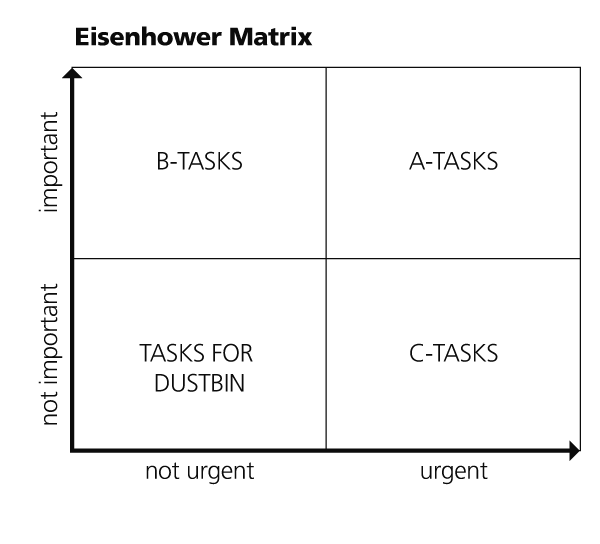Time To Chunk It - How To Manage Too Much On Your Plate

I'll be the first to admit that many of us, myself included, just have too much on our plate to cope with every day. If you've felt that overwhelmed feeling at times then you know what I mean. If you feel that virtually every day, then honey, we need to talk.
I'm not going to give you 5 strategies here, or 6 signs, or even 10 ways, but what I am going to do is give you 2 processes that form a very usable system. They essentially work hand in hand and if you use them properly in the right context, you're not going to have to worry about feeling overwhelmed with work again.
What Is Chunking
How using chunking the “right way” can save you time and headaches
If you’re an Anthony Robbins fan, which if you’re working on self-development who wouldn’t be, then you’re probably already familiar with the concept of chunking. What Anthony Robbins talks about is being overwhelmed because there’s too much on your plate so you should chunk things into large chunks and it won’t seem like so much to deal with. One of the analogies that he gives is driving a car. If you chunk it down to all the things that you have to do to drive, it can seem overwhelming. Yet after you’ve done it a few times, it’s not a problem at all. As true as that is, there are problems with this philosophy.
First of all, if you have very large projects it becomes almost impossible to just chunk it up and say today I’m going to move that mountain. It’s unrealistic and big chunks can end up taking a lot of time which never gives you the satisfaction of thinking that you’ve been very productive at all with your day. The other way to chunk is to break things into smaller pieces so that big tasks become very small ones.
Let’s say that we’re going to use the analogy of driving a car again. Take everything that you’d have to do to drive a car and put it into a list. Something like:
- Get into the car
- Put the key in the ignition
- Start the car
- Put the car in gear
- Look both ways to make sure no one is coming
- Etc.
You get the idea. So if after everything that you do you check it off of the list you’re going to end up with a greater sense of accomplishment then if you just drove your car to wherever it is that you’re going. There’s something to be said for being able to check things off on your list. Something happens in your mind that makes you happy and motivated from the sense of accomplishment that you have from it, so don’t discount what it can do for you.
You’re probably wondering how chunking down eliminates the problem that chunking up eliminates right? The simple answer is that it doesn’t. However, we’re not going to just use one or the other, we’re going to use both chunking up and chunking down in the proper way.
First we need to know how to chunk things into manageable chunks. Take our analogy of driving a car again. If we’re going to chunk this down we want to break things initially into a general overview. For instance, instead of saying that we’re going to just drive the car we could say that we’re going to put the car into gear and step on the gas and use the brake to stop the car. This essentially chunks it down to something a little more explanative giving us a better understanding of what needs to be done.

We can take it a step further and say that we’re going to start by sitting in the drivers seat, putting the key into the ignition, etc. When we get down this far we want to be explaining the step-by-step how to’s that go along with whatever the task may be.
It’s up to you to decide how far down you’re going to need to chunk something. In the case of driving a car, it’s probably the destination that’s going to be the chunk you want. The point in chunking down is to get things down to tasks that take no more than 60 min to accomplish.
So now that we’ve gotten everything chunked up or down to where it’s a manageable task, how do we prioritize our tasks into something that makes them usable?
"Something happens in your mind that makes you happy and motivated from the sense of accomplishment that you have from it, so don’t discount what it can do for you."
It’s All In The Box
How to prioritize using the Eisenhower Box
You might have heard about President Eisenhower in the 50’s and his uncanny ability to be able to prioritize things in such a way that he got an enormous amount done in his administration. This wasn’t by accident and it really wasn’t an uncanny ability.
The good President used what’s now become known as the Eisenhower Box. It’s simply a box that’s broken into 4 quadrants. Take a good look at the one below here:

Simple enough isn’t it? As you can see the 4 quadrants are setup to show Important/Urgent, Important/not urgent, Not Important/Urgent, and Not Important/Not Urgent. My graphic also shows them labled A – D and we’ll get to how we’re going to use that in this next section.
First, let’s go back to your chunked list. I want you to go through this list and number everything in the list. Then go back through the list and label everything A – D as it relates to the 4 quadrants in the Eisenhower box.
Once you’ve gotten that done, we’re going to go back up to the box and with a pencil place your tasks as they should be in the boxes. Their particular location in the box is important in determining how you see them in relation to the box that they’re in.
For instance, a task that’s super important and super urgent would go into the very top of the Important/Urgent box all the way to the far upper right hand corner. Likewise, something that wasn’t quite as urgent and a little less important might be in the lower left-hand corner of that same quadrant. I hope you get the idea here. Go through all your tasks and put them in the proper quadrants.
Time Saving Habits
Making habits that are useful
Here’s where the real magic of all of this comes in. What you’ve learned here are two strategies that you can use together to help you not only keep tasks managed properly, but also to prioritize them in the right way. All of this information is great, but how do you use this in a constructive way that’s not going to take more time out of your day? Let me show you how to use this in your everyday life.
I use what I call a 30-15-60 plan. What this means is that every Sunday night you’re going to take 30 minutes to sit down and plan out your week in just the same way that we’ve been talking about here. All your tasks and all your chunks of stuff that you have to do in the following week. So that’s our 30.
Then every night you’re going to take 15 minutes, usually less, to plan out your next day giving everything the priority that it needs to have. When you’re doing this take the top 3 things on your “A list” and give them no more than 60 minutes each for the following day. (Remember, If you’ve chunked things right they won’t be more than 60 minutes for any task.) Do those 3 things on your “A-list” first as soon as you get going in the morning and get them out of the way.
Here’s the magic, now that you’ve got 3 “A-list” items that get checked off of your list first thing in the morning you can settle back a little and work on the things that aren’t quite so important and it’s going to give you a huge relief and sense of accomplishment to know that you’ve gotten them done.
